The Blueprint Pt 2/3: The CIA’s Global Coup Machine (1980s–2020)
What if regime change wasn’t the exception—but the rule? From Panama to Iraq, this exposé reveals how the CIA perfected the art of quiet conquest.
Let me guess—you thought the CIA stopped doing coups after the Cold War?
No, of course you didn’t.
That’s why you’re reading this.
They didn’t stop. They got faster, slicker, and way better at covering their tracks.
See, coups don’t always come with tanks in the streets or dictators dragged out on live TV.
Sometimes they look like press conferences.
Emergency laws.
IMF deals.
A little "economic instability" here, a suspicious election result there. And suddenly—new government, same old clients.
And the best part?
They don’t even have to do it alone anymore. They’ve got think tanks, media spin cycles, NGOs, “election observers,” and friendly billionaires to help make it all look legit.
This isn’t tinfoil hat stuff. It’s public record if you know where to look—and if you understand the pattern.
Here’s the basic formula:
Target a government that steps out of line. Too independent? Too socialist? Not playing ball with Washington or Wall Street? That’s all it takes.
Undermine it from the inside. Fund the opposition. Push media narratives. Weaponize inflation. Stir protests.
Trigger a crisis. Sometimes it’s a coup. Sometimes it’s a court decision, a “technical” impeachment, or just a helpful general making a phone call.
Install someone “reasonable.” Translation: someone who listens to Washington.
Call it democracy. Cue the headlines. Cue the new loans. Cue the forgotten promises.
In Part 1 of this series, we looked at the roots—Operation Gladio, NATO’s stay-behind networks, the Cold War psyops designed to scare Europe away from communism.
The Blueprint Pt 1: The CIA’s Global Coup Machine (1950s–70s)
From the 1950s through the 1970s, the CIA orchestrated a series of covert operations that toppled democratically elected leaders and installed authoritarian regimes across Latin America, Africa, and Southeast Asia.
Now, in Part 2, we follow that thread from the 1980s to today.
This isn’t history. It’s infrastructure.
Part I: Fast, Loud, and Sanitized
Grenada (1983): The Warm-Up Act
Small island. Big headlines.
Grenada was the perfect target for a "clean" operation. In 1983, a Marxist faction seized power in a left-wing government already leaning too close to Cuba.
That’s all the U.S. needed.
Cue the alarm bells in Washington. Headlines started tossing around words like Cuban expansion and Soviet beachhead.
“I entirely share the Government's hope that the Americans will get out as soon as they can and make way for a Commonwealth exercise—if necessary with troops; but, anyhow, with economic aid and technical assistance—to set Grenada up on a new course of democratic progress and prosperity…We must all be firm about resisting further Cuban expansion.”
“Each day's delay in assisting the freedom fighters increases the chances of a permanent Soviet beachhead of agression on the North American mainland.”
— President Ronald Reagan, 1986 New York Times Article
And just like that, Reagan greenlit Operation Urgent Fury.
Here’s how it played out:
Excuse: 800 American medical students “in danger.”
Reality: No confirmed threat. Most students didn’t even know they were “hostages.”
Result: 6,000 U.S. troops stormed the island. Military targets hit. Government overthrown.
It took less than a week to flip Grenada’s government. By the time most Americans were hearing about it, it was already over.
And the media? Oh, they ate it up.
“Rescue mission successful.”
“American lives saved.”
“Democracy restored.”
But here’s what it really was: a trial run. A low-risk invasion to fine-tune the speed, optics, and story-spinning needed for regime change in the media age.
You could almost hear the Pentagon taking notes.
Panama (1989): When an Asset Becomes a Liability
You know what’s worse than an enemy?
A friend who starts thinking for himself.
Manuel Noriega was a CIA creation. Trained by the U.S., paid by the U.S., protected by the U.S. He helped funnel guns and drugs for covert ops all over Latin America.
Until he got too bold, too independent—and too loud.
So they flipped the script.
Suddenly, Noriega was Public Enemy No. 1.
Drug kingpin.
Dictator.
Threat to democracy.
A man who—let’s be real—had been doing the same things for years, just not under Washington’s thumb anymore.
The answer? Operation Just Cause.
(Because calling it Operation Regret That We Trained Him would’ve been too honest.)
20,000 U.S. troops dropped into Panama City in a full military blitz.
Whole neighborhoods were leveled. Civilian death toll? Still disputed—some say dozens, others say hundreds.
Noriega was pulled from a church, paraded like a trophy, and shipped off to Miami.
And when the dust settled? A new government, friendlier to U.S. business and military interests, stepped in.
Guillermo Endara’s inauguration took place at Fort Clayton, a U.S. military base in the Panama Canal Zone, mere hours after the invasion commenced.
After the invasion, President George H. W. Bush announced a billion dollars in aid to Panama. However, about half of the aid was a gift from American taxpayers to American businesses.
Endara dissolved the Panamanian Defense Forces, which had been loyal to Noriega, and established the Public Security Force (PSF). This new force was designed to operate under civilian control and was intended to be more amenable to U.S. oversight and cooperation .
So, the Panama Canal stayed secure. U.S. bases stayed open. All wrapped up in a bow of “defending democracy.”
The media moved on. But the message stayed: You serve until you're no longer useful. Then you serve as an example.
"Everything done by the Republic of Panama under my command was known. Panama was an open book."
— Manuel Noriega (while incarcerated)
Why These Two Matter
Grenada and Panama weren’t just blips. They were prototypes.
Fast, media-driven regime changes designed to:
Minimize U.S. troop losses
Maximize control of the narrative
Install puppet governments while selling the illusion of “liberation”
This was Gladio with an update patch.
New branding.
Sharper weapons.
And a press corps trained to clap on cue.
These ops proved that you didn’t need a world war to justify toppling a government. You just needed a good enough excuse—and a camera crew.
Part II: Soft Coups, Sharp Teeth
These are the coups that don’t make front-page news. No bombs, no boots on beaches, no “shock and awe.”
Just headlines that say “Constitutional crisis” or “Democratic transition,” while in the background, elected leaders vanish, constitutions get shredded, and Washington’s friends suddenly find themselves in charge.
These aren’t coups with a capital C.
They’re smoother.
Quieter.
But they cut just as deep.
Honduras (1980s & 2009): Two Coups, One Playbook
Let’s start in the ’80s.
In the classic sense, a coup is a swift overthrow of a sitting government, usually by the military. But in Honduras, the U.S.—primarily through the CIA—didn’t overthrow the government. It captured it.
The CIA built a deep, dependent relationship with the Honduran military, especially units like Battalion 3-16, which was trained, funded, and advised directly by U.S. operatives.
This battalion carried out political assassinations, torture, and disappearances.
The targets weren’t just revolutionaries—they were journalists, students, priests, union leaders.
This silencing of civil society is a hallmark of soft coups: removing the base of democratic resistance.
The elected civilian government? Still technically in place—but power shifted behind the scenes to the military, which answered more to Washington than to its own people.
The CIA turned the country into its personal black site factory.
Arms in.
Rebels out.
Training camps, death squads, covert flights—it all flowed through Honduras.
A sovereign nation? On paper.
In practice? It became a controlled platform for U.S. operations.
Fast-forward to 2009.
President Manuel Zelaya—elected, popular, a little too independent—started doing some radical things. He introduced a minimum wage, gave out energy-saving lightbulbs, and promised to resolve longstanding land conflicts between peasant farmers and agricultural businesses.
That was enough.
But then he took it a step further:
He floated the idea of rewriting the constitution. Not to stay in power. Just to put the idea to a vote.
Now, the US had to do something.
The military burst into his home, threw him on a plane, and dumped him in Costa Rica in his pajamas. (yes, not embellishing)
No trial. No process. Just get him out.
And the U.S.? Hillary Clinton’s State Department refused to call it a coup.
"We are withholding any formal legal determination…We haven't laid out any demands that we're insisting on, because we're working with others on behalf of our ultimate objectives."
Even Barack Obama at first decried it and then seemed to be okay with it:
"I am deeply concerned by reports coming out of Honduras regarding the detention and expulsion of President Mel Zelaya.”
White House Statement
"We believe that the coup was not legal and that President Zelaya remains the president of Honduras, the democratically elected president there.”
Oval Office Meeting
But actions speak louder than words.
The US continued to send money to Honduras, to the tune of about $200M since 2009.
So, why did it even happen? Why didn’t we stop it?
Well, Hillary Clinton herself told us why:
“Our assessment was, we will just make the situation worse by punishing the Honduran people if we declare a coup and we immediately have to stop all aid for the people.”
Ah. So calling it a coup would’ve triggered a freeze in U.S. aid and military support.
Can’t have that.
Instead, Washington backed the “new” government.
The media shrugged.
And Honduras? It slid into cartel violence, corruption, and one of the highest murder rates in the world.
The U.S. has been silent about the fact that the new president, Porfirio Lobo, has overseen a reign of terror that, since the June 28, 2009 coup, has seen the assassination of some 130 anti-government activists…The murders bear a close resemblance to death squad assassinations carried out under military dictator Policarpo Paz Garcia in the late ’70s and early ’80…
“We are living in a state of terror,” says human rights activist Dr. Juan Almendares, a former director of research projects at Harvard and the University of Pennsylvania. Almendares currently runs a free clinic in Tegucigalpa, the Honduran capital.
— Conn Hallinan, Columnist for Foreign Policy in Focus
But hey—at least they kept listening to D.C.
And DC profited.
The coup created a “green zone” for corporate development in Honduras, backed by military force and shielded by U.S. diplomacy. It shaped a state that prioritized investor rights over human rights, and did so under the warm approval of Washington.
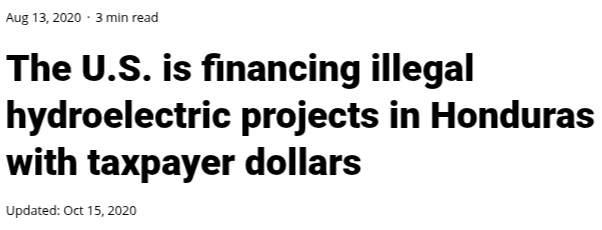
Peru (1990–1992): Dictatorship with a Friendly Face
Peru was a mess. Shining Path rebels were bombing cities, assassinating judges, burning down police stations.
Chaos.
Then came Alberto Fujimori.
Mild mannered. Academic. Not a party insider. Just the kind of guy who looked harmless enough to win—and connected enough to be useful once he did.
He won in 1990. But the real story wasn’t about him.
The real power behind the throne? Vladimiro Montesinos.
According to NSA and CIA documents, Montesinos had been a known U.S. intelligence asset since the mid-1970s—long before Fujimori ever stepped into the political spotlight. By the time Fujimori came to power, Montesinos was already running Peru’s intelligence service (the SIN) with CIA cash and backing.
Then came 1992—the real move.
Fujimori dissolved Congress. Suspended the constitution. Sent tanks into the streets.
The press called it a “self-coup.”
And what did Washington do?
Well, first condemn (while its in the headlines). Then quickly backtrack.
The United States initially took a firm stance against the abrupt dissolution of Peru's democratic institutions. The U.S. government suspended $167 million in aid, and Congress halted all military assistance not related to drug enforcement.
However, this initial condemnation was followed by a more pragmatic approach.
Within two weeks, the Bush administration recognized Fujimori as Peru's legitimate leader, influenced mostly by his opposition to the Shining Path insurgency.
Yeah, sounds like kayfabe to me.
Here’s what really happened:
The moment Fujimori broke the system, Montesinos went to work—and Washington didn't blink.
With full control of the intelligence service and a budget that had grown fifty times larger, Montesinos turned SIN into a fortress of total surveillance and fear.
By 2000, more than 2,300 agents were on SIN’s payroll—spying, blackmailing, enforcing silence.
Wiretaps became routine, targeting journalists, judges, rivals, and allies alike. No one was off-limits.
Surveillance cameras were installed across Lima:
Congress, the courts, the airport, even brothels frequented by politicians—anything that could be used for leverage or blackmail.
Montesinos reviewed the footage personally. The man watched everything.
Behind the scenes, the intelligence compound—nicknamed “The Little Pentagon”—housed something darker:
A sub-basement where political opponents were tortured and killed.
Bodies were reportedly burned in an incinerator, the stench of charred flesh lingering in the halls.
Disappearance became policy. Fear became law.
And while that machinery was grinding up dissenters, the economy was being auctioned off:
Privatization deals flooded in.
U.S. corporations and IMF bankers got fast-track access to Peru’s industries.
Telecom, mining, banking—all sliced, sold, and handed over to foreign investors.
The people got surveillance, poverty, and silence.
The press was either bought or crushed.
And Montesinos? He kept the machine oiled.
Fujimori smiled for the cameras.
Montesinos ran the show.
And the CIA? Quietly applauded from the wings.

For a decade, Peru became a case study in how to run an authoritarian regime in a business suit—one that held elections, shook hands with the IMF, and made enemies disappear.
It only unraveled when the “Vladivideos” leaked—tapes of Montesinos bribing lawmakers, judges, and TV executives like it was a regular Tuesday.
Piles of cash. Nods. Deals done in broad daylight.
But by then, the damage was already done.

So when Washington praised as "Peru’s hope for the future," remember:Fujimori
Peru was stabilized with fear, surveillance, and state-sponsored murder.
And the U.S.?
They backed the system that made it all possible.
What Ties These Together?
Different countries. Different decades. Same pattern.
In Honduras, you had a democratically elected president—Zelaya—who started talking about constitutional reform and raising wages.
In Peru, you had a mild-mannered academic—Fujimori—who rode in on a wave of disillusionment, then quietly handed the keys to an intelligence network run by a CIA-connected operator.
In both cases?
Washington grew uncomfortable.
The media started tossing around words like “populist,” “authoritarian,” or “threat to stability.”
Then something just happened.
In Honduras, the military showed up at Zelaya’s house and flew him out of the country.
In Peru, Fujimori dissolved Congress, suspended the constitution, and sent tanks into the streets—while the CIA-backed Montesinos built a surveillance state behind the scenes.
In both cases, a new government emerged.
It smiled. It promised “stability.”
And it listened when Washington spoke.
No Marines needed. No direct invasions.
Just the right blend of pressure, narrative control, and diplomatic nods.
And when it works?
Most people don’t call it a coup.
They call it progress.
Part III: Install, Remove, Install Again
Haiti (1991, 1994, and 2004): Coup Cubed
If there's any place that screams “Gladio 2.0,” it's Haiti. ‘
But you'd never know it from the headlines.
Let’s rewind to 1991. Jean-Bertrand Aristide, a left-leaning former priest with grassroots support, becomes Haiti’s first democratically elected president.
A poor country electing a populist reformer?
That was never going to sit well in Langley.
Within months—boom—a military coup.
Aristide is forced into exile.
And guess what? The military junta behind it?
Trained in U.S. military institutions.

It’s not theory; it’s public record.
“The agency paid key members of the junta now in power for political and military information up until the ouster of Father Aristide in 1991. A review of the C.I.A.'s activities in Haiti under the Reagan and Bush Administrations, based on documents and interviews with current and former officials, confirms that senior C.I.A. officers have long been deeply skeptical about the stability and politics of President Aristide, a leftist priest.”
— 1993, New York Times
The School of the Americas (dubbed “The School of the Assassins”) was a regular pipeline. And those same forces were already on Washington’s radar as “assets.”
And the general who led the coup?
According to two Government officials, he was sending reports to the United States Government that were critical of Aristide. Oh, and he was a graduate from the “School of Assassins”.
Not only that, “a 1992 Drug Enforcement Administration document described S.I.N. in the present tense, as ‘a covert counternarcotics intelligence unit which often works in unison with the C.I.A. at post.’”
"[SIN] was a military organization that distributed drugs in Haiti. It never produced drug intelligence. The agency gave them money under counter-narcotics, and they used their training to do other things in the political arena."
Now fast-forward to 1994. Under the Clinton administration, U.S. troops land in Haiti. They’re there to bring Aristide back... right?
Sort of.
In 2000, Aristide ran again. And won.
But now, a new wave of chaos was brewing.
Armed gangs—allegedly Haitian—started destabilizing the government.
But look closer. Where were they coming from?
Across the border in the Dominican Republic (which the US had previously overthrown).
“In the years preceding the ouster of the elected government in 2004, the Haitian police were thoroughly infiltrated by enemies of the government. A proxy force was organized on Haiti’s border with the Dominican Republic to conduct an armed overthrow of the government. And after the overthrow, the country was occupied, first by US Marines and other Western troops from Canada and France, and next by a Brazilian-led United Nations force. This externally organized violence cost Haiti thousands of lives, and imposed a neocolonial arrangement on the country.”
— Jeb Sprague, Paramilitarism and the Assault on Democracy in Haiti
Documents and whistleblower testimony say it plainly: the U.S. built Gladio-style paramilitary camps along the Haitian-Dominican border.
They trained Colombian mercenaries and hired guns there, not for defense—but for sabotage.
That "armed gang violence" in Haiti?
Manufactured chaos. A strategy of tension.
The official story in 2004 was “unrest.”
But what really happened?
Armed rebels—many not even Haitian—stormed the country. And Aristide, once again, vanished. This time, literally.
He later said he was “kidnapped” by U.S. forces. Washington denied it—but the timeline’s tight, the flight path was weird, and the rebels moved in too fast.

Why all this effort?
Well, follow the gold. Haiti has an estimated $20 billion worth of untapped gold reserves.
Hillary Clinton’s brother, Tony Rodham, landed a mining contract through a Canadian company. But the Haitian constitution doesn’t allow foreign extraction. So long as Haiti stays independent and legally bound, the gold stays buried.
You see the problem?
From a Gladio perspective, this isn't a failed state—it's a targeted one.

The tools are newer, sleeker: NGOs, USAID money, and paramilitary “aid” programs. But the blueprint’s the same.
The signs of Gladio are all here:
Foreign-trained insurgents destabilizing the nation.
A compliant regime brought back into power—under economic leash.
Natural resources locked behind “uncooperative” constitutions.
Media narratives blaming “gangs” instead of trained provocateurs.
And just like that, Haiti’s path toward sovereignty is buried beneath chaos, coups, and contracts.
Venezuela (2002 & 2019): FAILURE to Coup
Hugo Chávez terrified Washington.
Not because he was a dictator, but because he wasn’t theirs.
He was oil-rich.
He was popular.
He was unapologetically anti-imperialist.
He nationalized industries, kicked out U.S. oil giants, and started selling fuel to Cuba and China.
To the CIA, that’s not leadership—that’s provocation.
So in April 2002, the gloves came off.
Tanks moved in and Chávez vanished for 48 hours.
A so-called “caretaker” government—stacked with business elites and military brass—was declared. They ripped up the Constitution. Abolished the legislature.
The U.S.? They recognized Pedro Carmona as Venezuela’s new President within hours of the coup. Hours.
And considered that Chávez had "resigned".
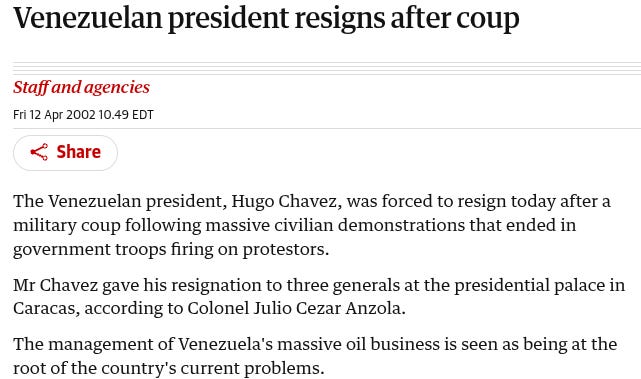
"A transitional civilian government has been installed. This government has promised early elections."
— Ari Fleischer, White House Press Secretary, April 12, 2002
Despite all this, the US wouldn’t call it a coup.
”Crisis.”
”Situtation.”
”Events.”
Why? Well, for one, same reason as when Honduras: It would have stopped U.S. aid and military support.
But then something happened the CIA didn't plan for:
Venezuelans fought back.
Millions took to the streets. Loyalists inside the military flipped. By Sunday, Chávez was back in power—and the coup collapsed.
Embarrassing? Sure. But that wasn’t the end.
How the U.S. Tried Again—Just Smarter
After 2002, Washington didn’t stop meddling. It just got quieter, more polished.
Less “invasion,” more “NGO.”
They pumped millions into opposition groups through USAID, the National Endowment for Democracy (NED), and friendly think tanks. According to U.S. Senate testimony, these were the same groups whose leaders had signed the coup decree that temporarily ousted Chávez.
“Our government has funded and continues to fund organizations headed by people who [were] leaders of the military coup in April of 2002. These leaders have received and some continue to receive funds from the U.S. Congress through the National Endowment for Democracy. These are people who signed the actual coup decree of April 12, 2002 and this decree overthrew the elected President and Vice President, abolished the General Assembly, the supreme court, and the constitution, and established a dictatorship. Should these people and their organizations be funded by U.S. taxpayers’ dollars?”
— U.S. Congressional Testimony, Senate Foreign Relations Committee, June 24, 2004
One group, Sumate, was directly funded by the NED to coordinate opposition strategy—everything from referendum signature drives to media campaigns.
And yes, U.S. taxpayers footed the bill.
Meanwhile, the CIA played its old game: economic sabotage.
They backed oil worker strikes in 2002 and 2003—crippling Venezuela’s main industry. The U.S. quietly encouraged these walkouts, knowing full well they would deepen the economic crisis and pin the blame on Chávez.
These oil workers didn’t strike for better wages or work conditions. They were striking against the government. In the US, they would have been ordered back to work. As a matter of fact, Reagan had already done that with the Air Traffic Controllers.
But anyways, rules for thee, not for me.
Chávez responded by firing striking executives and replacing them with loyalists.
Oh, and, in 2007, he had a radical idea:
Nationalize telecommunications and electricity sectors.
Why? Because he didn’t want the US spying on him or his people.
“The nation should recover its ownership of strategic sectors.”
That only deepened Washington’s hostility and sparked outrage.
”He’s going to spy on his own people! He’s a dictator!”
Ironic since this is 2007…well beyond when the USA started the “Patriot Act.”
Washington was fuming.
The 2019 Sequel: Juan Guaidó (FAILED)
Fast forward to 2019.
Hugo Chavez died in 2013. Official cause is cancer, though some suspect foul play.
He was succeeded by Nicolás Maduro—Chavez’s longtime foreign minister and political heir. But while Chávez was charismatic, strategic, and wildly popular among the poor, Maduro was blunt, rigid, and increasingly isolated.
At first, the U.S. kept its distance. But once Maduro continued Chávez’s policies—nationalizing key sectors, aligning with Russia and China, and doubling down on oil sovereignty—Washington’s patience snapped.
Then came the 2018 presidential election.
Maduro won—but the vote was marred by irregularities, low turnout, and a fractured opposition. Allegedly.
The U.S. and its allies declared the election illegitimate before the ink had dried.
Right on cue, Juan Guaidó—a U.S.-trained, U.S.-endorsed technocrat—stood in front of a camera and declared himself interim president.
No vote. No constitutional process.
Just US State Department approval.
Within hours, the U.S., U.K., and EU all recognized him.
It actually only took the US a few minutes.
Of course, this coup didn’t come as a surprise to the US. Turns out that the US had held secret meeting with the rebel military officers for over a year. Even President Trump personally backed Guaidó saying that the United States had a “military option” for Venezuela.
How did Venezuela feel about all this?
Not so great.
And Maduro was not going quietly.
“We don’t want to go back to the gringo interventions of the 20th century…The U.S. is trying to mount a coup and install a puppet government [to protect] its interests in Venezuela.”
— Nicolás Maduro
Washington said it was about “restoring democracy.”
And at first, the plan was going great! People cheered.
Polls showed 84% of Venezuelans supported him. They were starving for change—any change.
But Guaidó didn’t deliver.
No military defection.
No shift in power.
No plan beyond press conferences and foreign applause.
And as the crisis dragged on, hope turned to disillusionment.
By May, support was down to 50%.
By the end of 2019? It had cratered to just 10%.
Because despite the speeches, he never took control of a single lever of power—not the courts, not the army, not the oil fields.
His legitimacy came from D.C., not Caracas.
And during all of this, we find more Gladio fingerprints:
Armed incursions launched from Colombia (Operation Gideon)
Paramilitary training camps along Venezuela’s borders
U.S. and European funding for opposition media and political ops
Cyber campaigns accusing Venezuela of terror ties—just like they did with Chávez and the Madrid bombings

And when that didn’t stick, the U.S. kicked it up a notch.
The DEA charged Maduro with narco-terrorism.
Not just sanctions—they put a $15 million bounty on his head.
A wanted poster for a sitting president.

That’s not law. That’s a geopolitical hit job.
And still? Maduro held on.
Because the coup failed.
Guaidó’s movement? Collapsed.
His international shine? Faded.
His domestic support? Gone.
By 2023, even the opposition officially shut down his "interim government".
He never took power.
Maduro never left.
And the people of Venezuela, once again, got front-row seats to another failed Gladio playbook operation.
So What Was This Really About?
Same reason as always: oil.
Chávez and Maduro both tried to reclaim Venezuela’s vast petroleum wealth from ExxonMobil, Chevron, and ConocoPhillips. That alone made them targets.
In the words of economic hitman John Perkins, this is the playbook:
Debt. Destabilization. Destitution.
Then offer a deal Venezuela can't refuse.
“Sell us your oil at a discount, or we crush you.”
When Chávez said no? Coup.
When Maduro didn’t fall? Sanctions.
When the economy buckled? Blame socialism.
But through it all, the real crime wasn’t tyranny. It was sovereignty.
Bolivia (2019): A Bible, a Bayonet, and a Power Vacuum
Evo Morales won re-election in 2019.
The Organization of American States—funded heavily by the U.S.—called foul.
Alleged fraud, with suspicious timing and no concrete proof.
That was all the military needed.
They “suggested” Morales resign.
Guns on the table. He fled.
Suddenly, a right-wing senator no one had heard of was sworn in, waving a giant Bible and preaching about purging indigenous influence from the government.
Evidently Morales had banned the Bible from the site after his beliefs leaned more towards an Andean earth deity (going along with the indigenous religious practices of Bolivia) instead of the Roman Catholic Church.
And evidently, she was not shy about her disregard for Bolivia’s indigenous population (42% of the population, by the way) or their religion:


By the way, the previous tweet was from October 5, 2019.
Morales didn’t resign until November 10th.
Washington applauded. The press called it a “democratic transition.”
The OAS vanished into the background.
By the way, What did Morales do exactly?
Oh, the usual:
Program to return land and power to the Aymara (indigenous) people of Bolivia
Nationalize key industries
Legalize medicinal use of coca (the plant from which cocaine is derived)
And, for a while, these “radical” steps seemed to be working:
"In 2005, before I was president, the state of Bolivia had only $300 million from hydrocarbons…Last year, 2007, the Bolivian state—after the nationalization, after changing the law—Bolivia received $1,930 million. For a small country with nearly 10 million inhabitants, this allows us to increase the national economy."
— Evo Morales, Address to the UN General Assembly
Anyways, back to Añez.
Yeah, she didn’t last.
Mass protests exploded. Turns out, people don’t like it when you remove criminal liability for military and police in dealing with protesters.
The economy stalled. And by 2020, Morales’s party—MAS—won elections again. Democracy rebooted itself, but not before the system took a serious beating.
The Pattern? You Know It by Now.
A leader wins democratic power. Has ideas about increasing their autonomy as a nation.
Washington doesn’t like it.
Pressure builds. Protests funded. Allegations fly.
Coup happens—or something that smells like one.
If the coup sticks? Great.
If it doesn’t? Walk it back, slap some reforms on, and call it a “restoration.”
These aren’t accidents. They’re strategic resets. Keep the illusion of democracy, but rig the rules.
And if the people push back?
Paint them as radicals.
Criminals.
Enemies of freedom.
This is regime change in the Instagram age.
No uniforms. No midnight tanks.
Just press releases, hashtags, and a carefully timed press tour.
Part IV: Occupy, Bleed, Profit
Afghanistan (2001–2021): Graveyard of Empires, Playground for Contractors
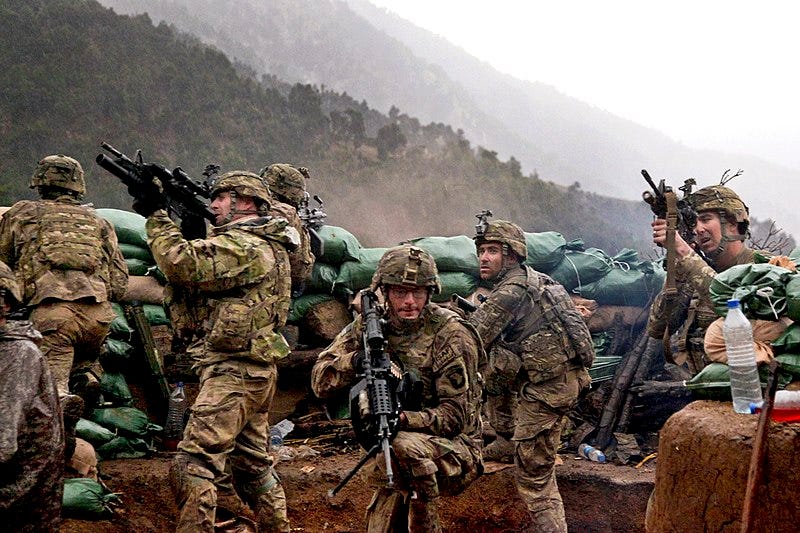
It started with 9/11.
That in itself is a trip.
Top 9 Facts That 9/11 Was an Inside Job
The September 11, 2001 attacks changed the world forever. The official story, provided by the U.S. government, attributes the devastation to 19 hijackers, led by Osama Bin Laden and Al-Qaeda. However, skeptics have long questioned the details of the day’s events, pointing out inconsistencies, anomalies, and unanswered questions. Below are nine of the mo…
America wanted revenge.
Justice.
Closure.
And for a minute, most of the world agreed.
But behind the patriotic music and flags waving on cable news, the blueprint was already unfolding.
They linked up with warlords—many of them with blood-soaked pasts—and handed them power like candy.
Arms, cash, intel flowed to brutal strongmen who carved the country into mini-kingdoms.
Groups like the Khost Protection Force ran black ops, raided villages, and disappeared people in the name of “counterterrorism.”
No oversight. No accountability. Just endless budget increases.
Twenty years passed. Over $3 trillion spent.
Schools were built. Then bombed.
Hospitals opened. Then looted.
The Taliban melted away... then came back stronger.
And what was left?
A hollowed-out government propped up by foreign money, abandoned overnight.
Thousands dead. Millions displaced.
And defense contractors? Paid in full.

This wasn’t a war to win.
It was a business model.
Afghanistan was the supply chain. And the troops?
They were just overhead.
Iraq (1991 & 2003): Oil, Lies, and A Made-for-TV Massacre
The U.S. hit Iraq twice.
Once as a warning. Once to finish the job.
1991 – Desert Storm:
Saddam invades Kuwait.
The U.S. responds with a slick, surgical campaign.
Smart bombs. Night vision footage.
Cable news turns it into primetime theater.
The war ends in weeks. Saddam stays in power—but Iraq’s infrastructure is shattered. Sanctions lock the country into slow death. Civilians starve while Saddam clings to his crumbling throne.
The official story? It was about saving Kuwait’s sovereignty. About stopping an oil-hungry dictator.
But here’s the twist:
It was never just about Kuwait.
It was about reminding the world exactly who ran the block now that the Cold War was over.
For over 30 years, policymakers and scholars pushed the idea that Saddam simply wanted Kuwait’s oil.
But that’s only half the story.
By late 1989, Saddam wasn’t just thinking about oilfields—he was thinking about the collapse of the global order.
The Soviets were retreating.
The Cold War was ending.
Saddam believed the world was entering a dangerous, temporary phase: five years of raw, unchecked American dominance—a moment before new powers like Japan or Germany could rise to balance it out.
And he was terrified.
He was convinced the U.S. and Israel were already plotting to destabilize him, using their new global clout to redraw the Middle East.
In Saddam’s mind, Kuwait’s oil overproduction wasn’t random—it was economic sabotage.
He saw the Kuwaiti royals as willing pawns in a U.S.-led conspiracy to cripple Iraq before the balance of power shifted.
In other words:
He didn’t invade Kuwait because he was greedy.
He invaded because he felt cornered.
Of course, Washington didn’t care about the why.
They needed a fast, televised victory to announce the new world order.
Desert Storm wasn’t just a war.
It was a message.
2003 – The Sequel:
The 2003 invasion of Iraq didn’t just happen because the CIA woke up one morning and decided, “Okay, now’s a good time.”
Washington had been trying to overthrow Saddam Hussein for over a decade.
Iraq wasn’t an afterthought—it was unfinished business.
Here’s what that long fuse looked like:
1992 – President George H.W. Bush signs a presidential finding authorizing the CIA to support groups trying to overthrow Saddam.
1993 – After a supposed Iraqi plot to assassinate former President Bush in Kuwait, President Clinton launches a missile strike on Baghdad.
1994-1995 – The CIA backs the Iraqi National Congress (INC), a coalition of opposition groups, promising cash, weapons, and political cover.
1996 – Operation Desert Strike: after Saddam cracks down on Kurds in northern Iraq, the U.S. fires cruise missiles at Iraqi military targets.
1998 – The Iraq Liberation Act is signed into law. It makes "regime change" in Iraq official U.S. policy and provides $97 million to the INC.
1999-2000 – CIA-supported Iraqi exiles try (and fail) to organize uprisings inside Iraq. Saddam’s secret police crush them ruthlessly.
2001 – After 9/11, U.S. hawks inside the government immediately start pushing Iraq as the next target—even before the dust settles.
Which brings us to the big setup.
Turns out the “reason” we invaded Iraq (at least initially), was because the US had intelligence that Mohammed Atta (one of the 9/11 “ringleaders”) met with an Iraqi official in the Czech Republic a few months before the attacks.
Yeah, turns out, that was lie.
“There is not one USG (counterterrorism) or FBI expert that…has said they have evidence or ‘know’ that (Atta) was indeed (in Prague). In fact, the analysis has been quite the opposite.”
— Declassified US Intelligence Cable
Then we heard about Weapons of mass destruction.
That was a lie too.
WMDs that never existed.
A connection to 9/11 that never happened.
When exactly did we implicate Iraq in all this?
Oh, on the afternoon of September 11th.

But it didn’t matter.
The U.S. invaded. Baghdad fell.
Saddam was captured, tried, and hanged.
Chaos filled the vacuum.
And while Iraqis picked through the wreckage, Halliburton, Blackwater, ExxonMobil, and dozens of defense contractors moved in.
Oil fields were secured before hospitals.
Billions went “missing” in untraceable Pentagon contracts.
Private armies roamed with zero rules.
Halliburton alone gained $39.5 Billion in “federal contracts related to the Iraq war.” Dick Cheney (VP at the time) served as Halliburton’s CEO just the previous year. Even in 2001 though, he was still receiving about $150k a year in ‘deferred payments’ and held 433,000 Halliburton stock options while serving as Vice President.
Meanwhile, the CIA played chess in the background—arming militias, running interrogation sites, and helping pick political winners.
Spoiler: they were all losers.
Iraq wasn’t a mistake.
It was a franchise reboot.
These Weren’t Wars. They Were Investments.
Let’s not kid ourselves.
Afghanistan and Iraq weren’t failures—they were lucrative.
They didn’t collapse because of bad planning.
They collapsed because of the plan.
The goals were never democracy or stability.
The goal was:
Long-term military presence
Full-spectrum surveillance and influence
Access to resources and regional leverage
And billions in taxpayer cash funneled to private corporations through contracts no one reads
This is the Gladio model with an unlimited budget and air support.
THE BIG PICTURE
History books like to put nice clean endings on things.
The Cold War ended.
America "won."
Covert coups were stamped "case closed."
But if you’ve been paying attention, you know better.
The tactics didn’t stop.
They evolved.
Grenada. Panama. Honduras. Peru. Haiti. Venezuela. Bolivia. Iraq. Afghanistan.
Different countries. Different years.
Same fingerprints.
They don't need tanks and dictators anymore.
Now they have "interim governments," "technical impeachments," and "stability packages."
Now they have hashtags instead of handcuffs.
And here’s the part no one tells you:
The blueprint didn’t stay in the history books.
It's still live. Still running. Right now.
You just don’t see it as clearly because the headlines got smarter, the contracts got thicker, and the soldiers started wearing suits instead of fatigues.
We don’t have the benefit of declassified memos or tell-all whistleblowers—yet.
All we have are the clues.
And trust me—there are a lot of clues.
In the next (and final) part of this series, we’re not digging through old archives.
We’re looking at the board today.
Sudan. Libya. Myanmar. South Sudan. Ukraine.
New players. Same game.
And the empire?
It’s busier than ever.
Stay sharp. The next chapter isn't history.
It's happening.
The Blueprint Pt 3: The CIA’s Global Coup Machine (Today)
Let’s say you don’t buy into the idea that the U.S. is still involved in coups. You believe things like “democracy wins” or “foreign policy is about stability, not control.”







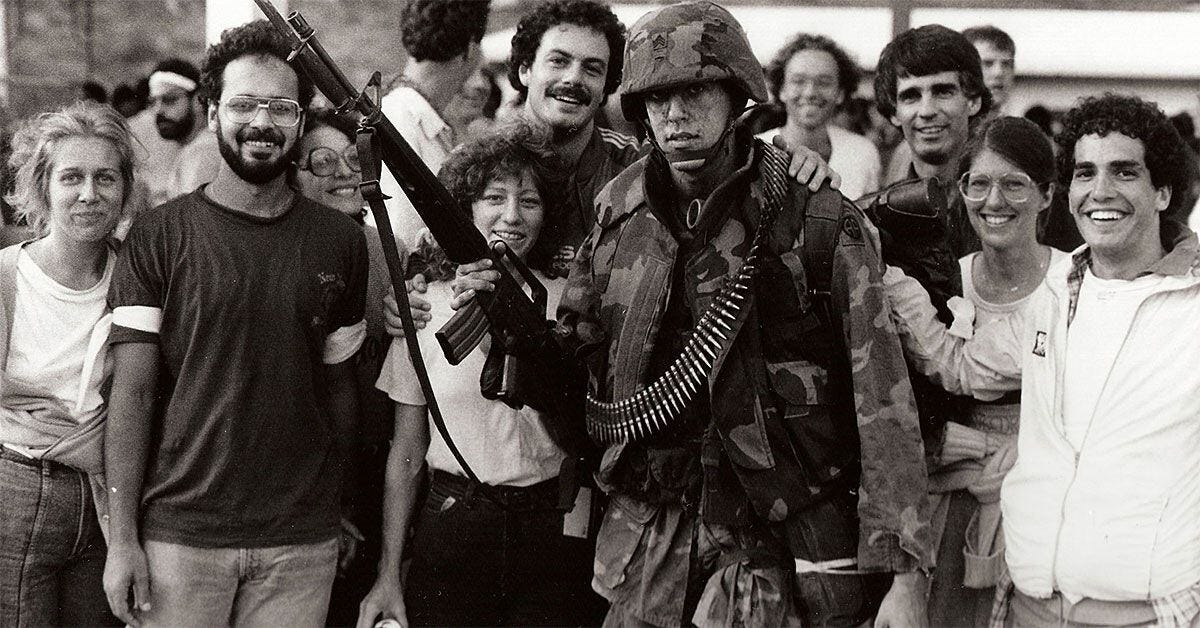

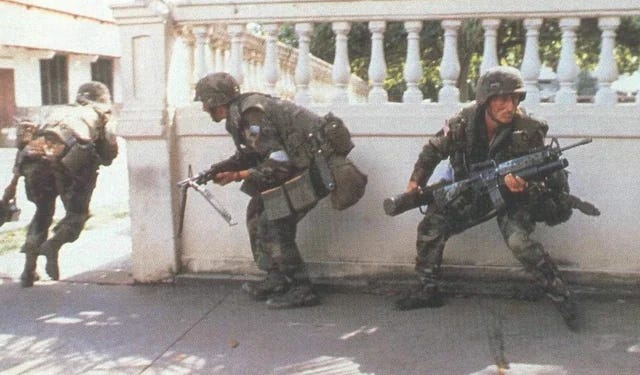
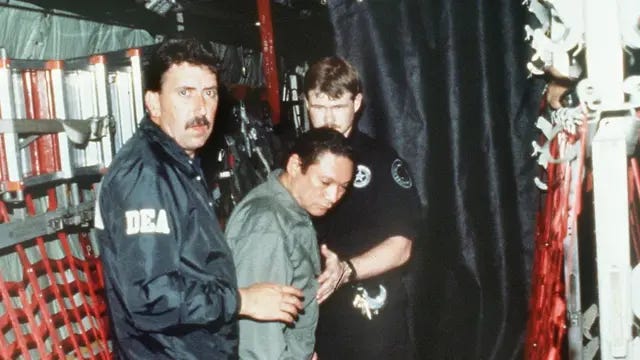


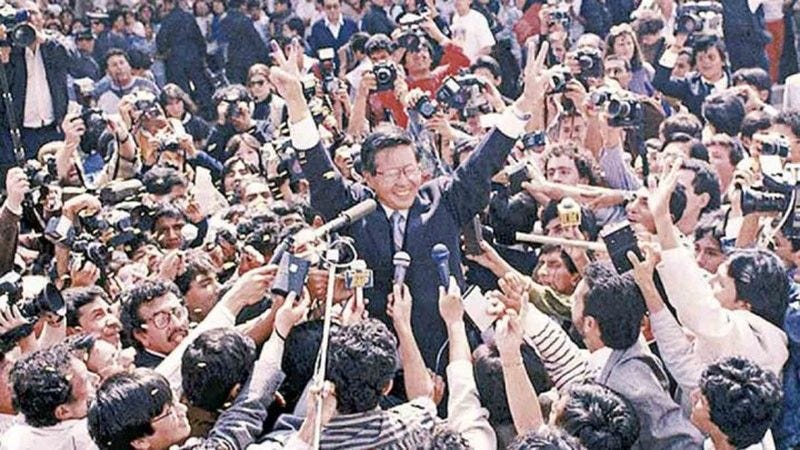
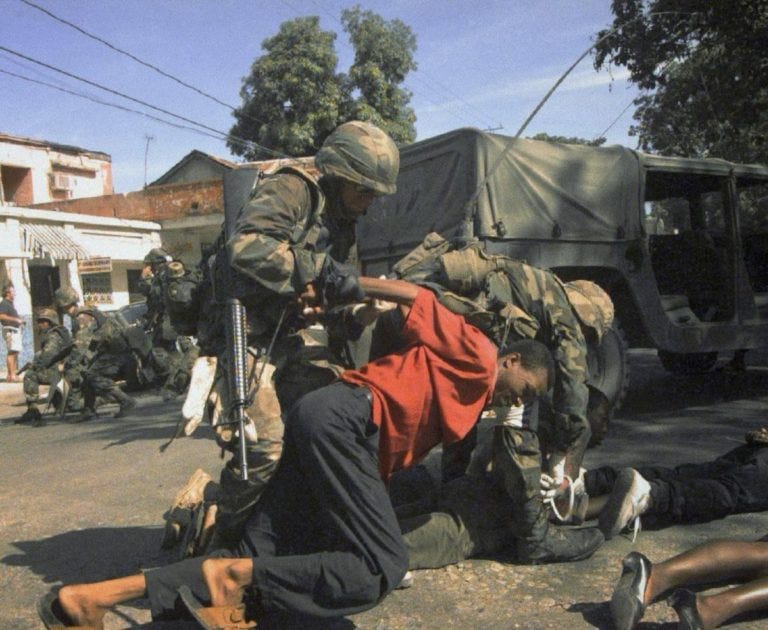
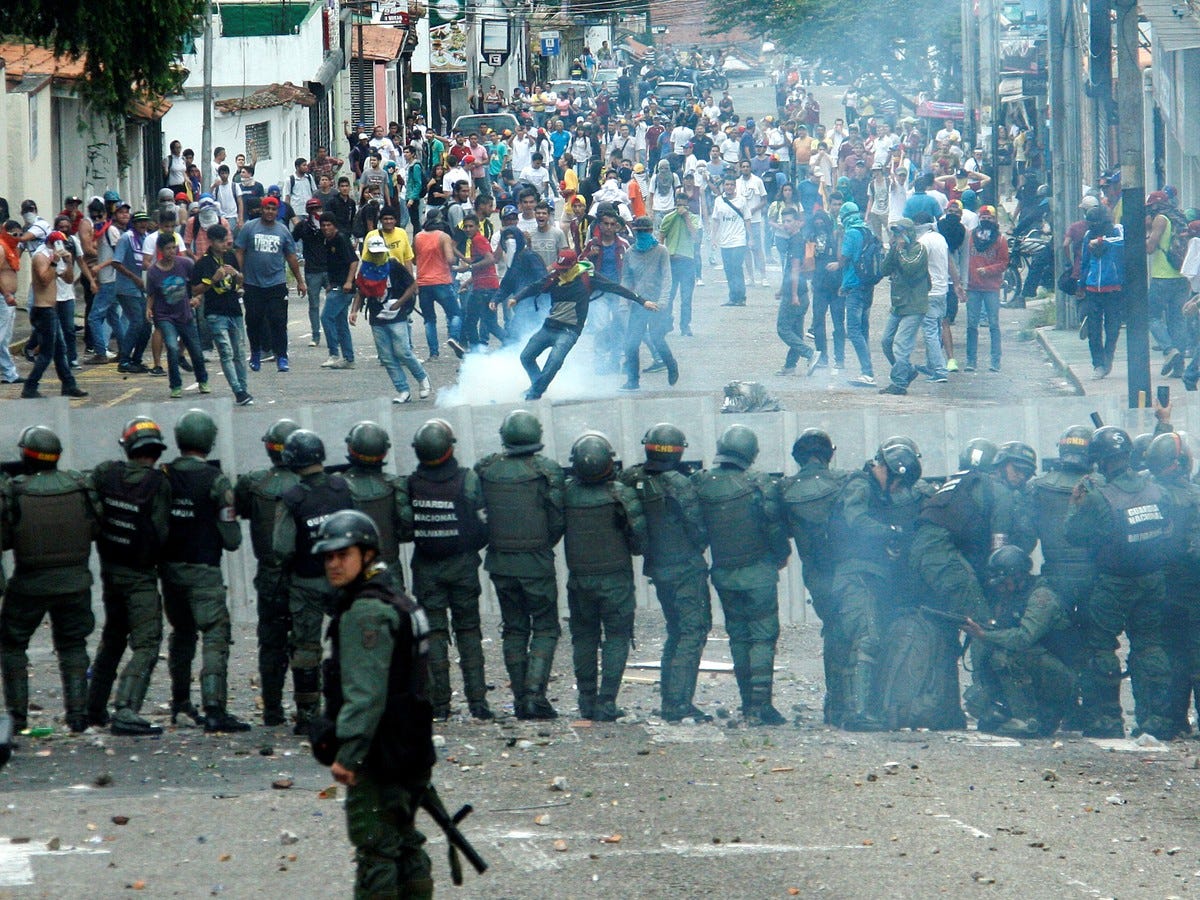
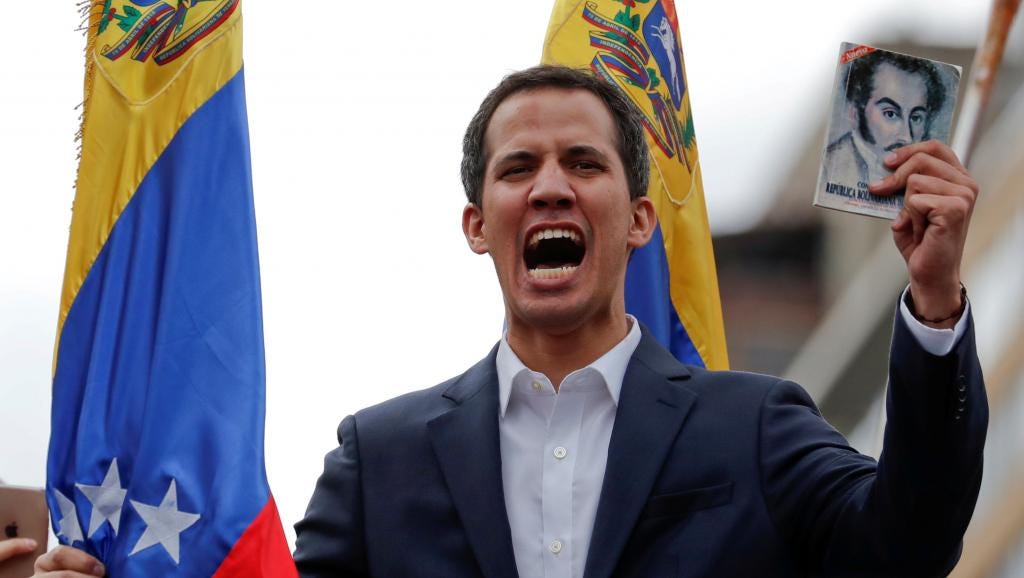
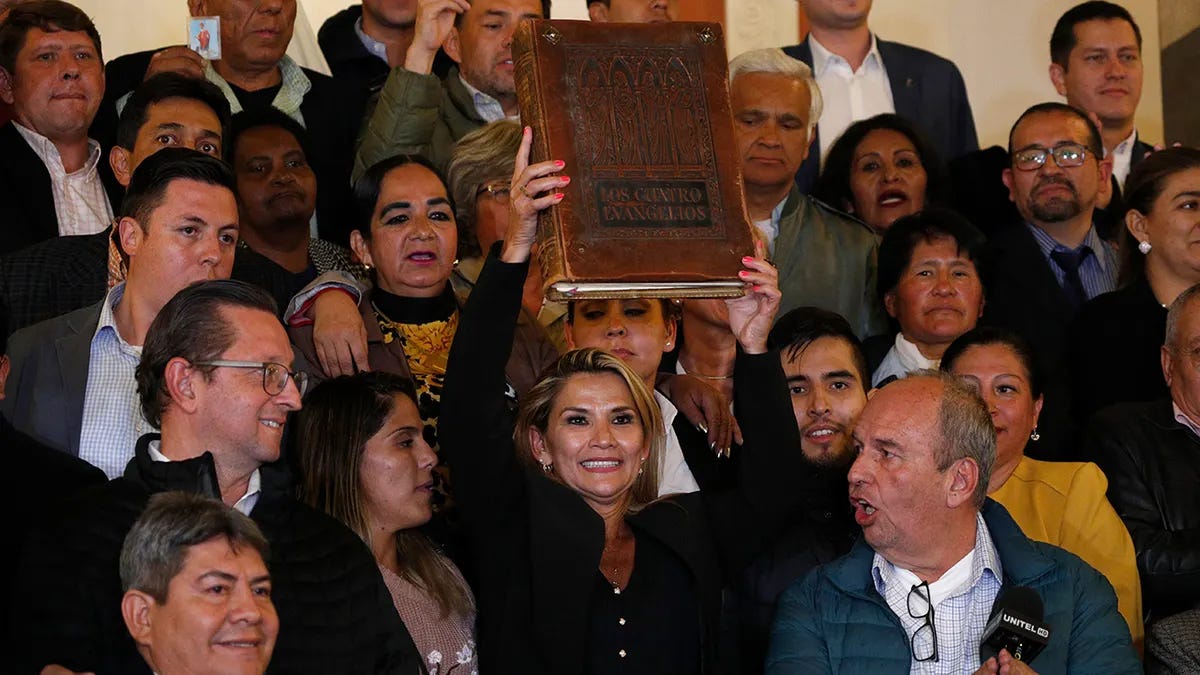


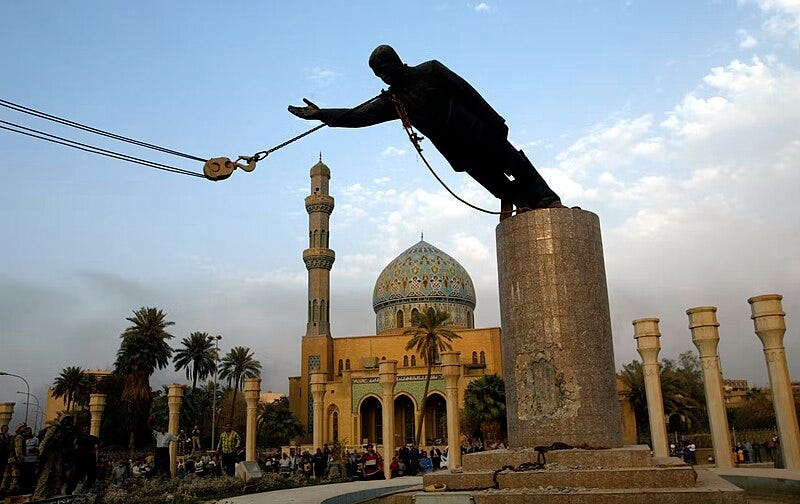

Okay, now do the US in the rebellious 1960’s!
Start in Southern California, where the “Sex, Drugs and Rock and Roll-hippie culture” was seeded and rolled out by military intelligence/CIA operatives.
Study “Laurel Canyon“ and Charlie Manson as if your life depended upon it!
Read: “Chaos” and “Weird Scenes Inside the Canyon” !
The Shining Path sounds like it was quite useful to it's opponents. I see a lot of that in today's West. Speaking of which, when I look at the CIA playbook I see a lot of that in action today, in the West...